#Vitascope
Text
This Day in 1896: Movies Crash Vaudeville
April 23, 1896 was a pivotal date in the histories of both live vaudeville and cinematic exhibition. On that day, Koster and Bial’s Music Hall topped off their presentation of six variety acts with six short projected films by the Edison Company.
As we wrote here a few days ago, movies had been introduced in New York two years earlier in the form of self-serve kinetoscope machines. These were…

View On WordPress
1 note
·
View note
Photo
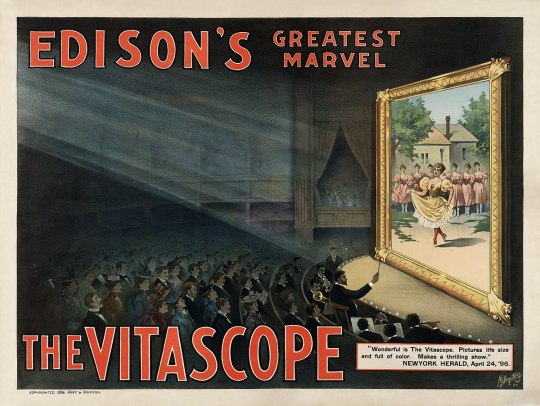
Vitascope è stato uno dei primi proiettori cinematografici dimostrato per la prima volta nel 1895 da Charles Francis Jenkins e Thomas Armat. Avevano apportato modifiche al Phantoscope brevettato da Jenkins, che proiettava immagini tramite pellicola e luce elettrica su una parete o uno schermo.
(via Vitascope - Wikipedia)
1 note
·
View note
Text
Nahomi esta caliente
Chupando y follando en motel con el primo mayor
Macho vato verga dura morrito
Nude Beach Voyeur Candid Spy HD Spread Pussy Nudist
HORNY thug BOTTOMING for TWO bigdicked officers
slideshow girls league of legends censured version
Bigtits babe pussyfucked during taboo scene
Devon Lee - Tits On Patrol - Brazzers
Bulge out teen gay porn Zac Gets Picked Up And Fucked
Gina Valentina In Valentina Blow Bang
#minutious#shide#microstress#silviculturally#pheasant's-eye#osculation#partita#semi-armor-piercing#foresound#Rhizostomata#chiliarch#lady-of-the-night#abandoned#cloghad#gestatory#snipocracy#vitascope#prestissimo#Caballo#gastrocentrous
0 notes
Text
Young sweetheart endures harsh treatment on her pussy and tits
Ebony thot giving good sloppy head
Super Star Dj Fuck a Thot To His Artist Music
Hot Indian Saroj Bhabhi Invite Devar For Fucking
Masturbate in cock ring
Nude boys bound in a chair gay Camping Scary Stories
Busty sister Erin and Helen Stars in Latex stockings
tweaker beauty compilation
POV fucking perfect icy blonde hottie
Naughty thai woman gets impaled on a big palpitating prick
#foresound#Rhizostomata#chiliarch#lady-of-the-night#abandoned#cloghad#gestatory#snipocracy#vitascope#prestissimo#Caballo#gastrocentrous#hypalgic#amassments#gasbag#seduce#flunkydom#IADB#womanwise#oysterhouse
0 notes
Text
Kompromat
Kompromat is a documentary that asks serious questions about the relationship between our former Prime Minister Boris Johnson, and the Russian secret state.
They told me not to make it. So I did.
For years British investigative journalist and writer John Sweeny tried to get this story out, however he faced difficulties with the main TV channels to do so.
This is a film about the Russian secret…

View On WordPress
0 notes
Text

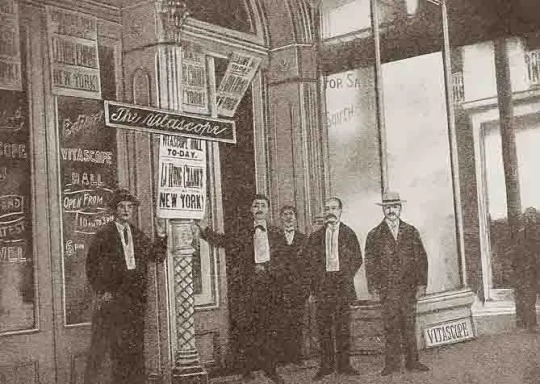
On July 26, 1896, the first fixed-seating movie theater in the U.S. opened at 623 Canal Street in New Orleans. Admission to the 400-seat Vitascope Hall —a showroom fitted with a projector and filled with chairs and used church pews—was 10 cents. #OnThisDay
34 notes
·
View notes
Text
Pixlriffs’ litematica ability to project and see the builds of the past to try and rebuild those bits of architecture in his attempt to preserve that history, except it’s not a watch or some sort of magic ability - it’s an old opaque projector, like a vitascope. almost ancient with just a little bit of magic from the land embedded in its lenses, able to project the history of the landscape. he’s got it up and running and it’s a little flicker-y but it works well enough, he’s taking notes of the grainy after images of empires from long before his time, building on the blueprint of historical importance
do you see my vision
#an opaque projector called litematica - leitmatica if you want to get fancy (because that’s how I thought that was spelled at first pfjdjfj)#maybe it’s something he’s found and uses to his advantage. maybe it’s something he’s had all along and something about the old powers of the#land help power it now showing things that have been long forgotten to time#I’m holding you by the shoulders look into my eyes. do you see do you understand the vision#it fits so well#pixlriffs#empires smp#mcyt#empires s2#edit: so I’m not 100% sure on the vitascope being an opaque projector? ignore my silly little projector inaccuracy#google vitascope you’ll get what projector I’m getting at
100 notes
·
View notes
Text
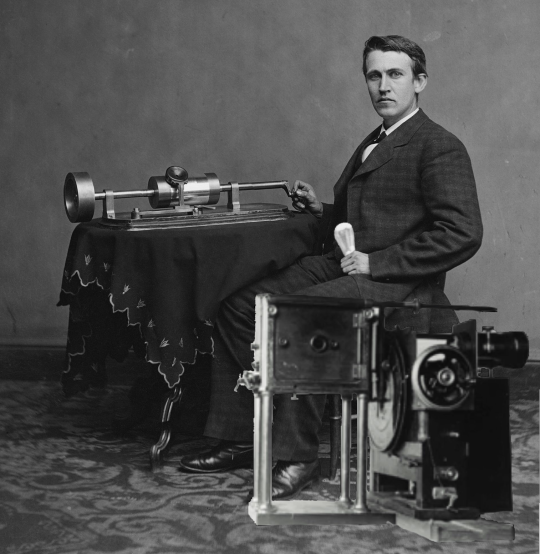
Thomas Edison had cinematic memory, symphonic memory and night vision. He invented the Phonograph, the Vitascope, and the light bulb.
#modern art#21th century photography#Thomas Edison invented the phonograph#Thomas Edison invented the vitascope and lightbulb
0 notes
Text



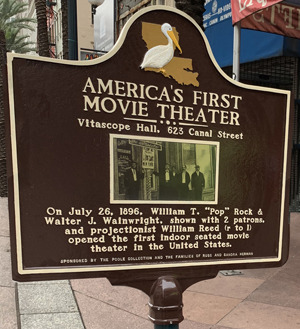

Cool Stuff in New Orleans
Back just before the turn of the 20th century, 623 Canal Street in New Orleans was the site of Vitascope Hall, the United States' first commercial movie theater. Beginning in 1896, some 400 patrons would find their seats in the hall, and enjoy 10 - 12 short films. Price of admission - 10 cents (about $3.67 today). For an additional 10 cents they could get a peek behind the curtain at Edison's vitascope projector. In spite of its popularity - it was the only profitable one out of the 40 Vitascope Halls built around the country - the promoters closed it after 3 months in favor of pop-up exhibitions instead of a fixed space.
The building that housed Vitascope Hall still stands, just 2 1/2 blocks from the Royal Sonesta (host for Miss Fisher Con 2024). Today it's home to short-term apartments and a convenience store.
For more Cool Stuff in New Orleans, check out the Things to Do in New Orleans page on our website
#miss fisher's murder mysteries#mfmm#miss fisher con#missfishercon#miss fisher and the crypt of tears#the adventuresses’ club of the americas#phryne fisher#ms fisher's modern murder mysteries#new orleans#peregrine fisher#missfishercon2024#nola#big easy#crescent city#movie#thomas edison
8 notes
·
View notes
Video
youtube
Hand Crank Projector Classic Film Vitascope! Worlds first Battery Free w...
0 notes
Text
EVOLUTION OF CINEMATOGRAPH ( 19 CENTURY )
1832
The Belgian physicist Joseph Plateau and the Austrian professor of practical geometry Simon Stampfer invented the Phenakistiscope, the first practical device to create a fluid illusion of motion.
1878
Using a battery of 12 cameras Eadweard Muybridge records several series of The Horse in Motion, capturing successive phases of movements that allowed his patron Leland Stanford to study the positions of the legs of his race horses during different gaits
1882
Étienne-Jules Marey developed the Chronophotographe, which could take 12 pictures per second from a single viewpoint.
1888
In Leeds, England Louis Le Prince films Roundhay Garden Scene, believed to be the first motion picture recorded. Sarah Whitley, Joseph Whitley and Annie Hartley in the garden of Oakwood Grange, leisurely walking around the garden of the premises. Sarah is seen walking – or dancing – backward as she turns around, and Joseph's coattails are seen flying as he also is turning.
1889 or 1890
By William Kennedy Dickson and William Heise. Monkeyshines is a series of experimental short silent films made to test the original cylinder format of the Kinetoscope, and are believed to be the first films shot in the United States.
1891
Dickson Greeting, by William Kennedy Dickson was the first semi-public demonstration of cinematographic pictures in the United States. The National Federation of Women's Clubs were shown a 3 second clip of Dickson passing a hat in front of himself, and reaching for it with his other hand on May 20, 1891 at Edison's laboratory.
1892
On 28 October 1892 Charles-Émile Reynaud gave the first public performance of a moving picture show at the Musée Grévin in Paris, the Théâtre Optique. The show, billed as Pantomimes Lumineuses, included three cartoons, Pauvre Pierrot, Un bon bock, and Le Clown et ses chiens, each consisting of 500 to 600 individually painted images and lasting about 15 minutes.
1893
Blacksmith Scene, by William Kennedy Dickson. The first Kinetoscope film shown in public exhibition on May 9, 1893 and is the earliest known example of actors performing a role in a film.
1894
On April 14, 1894, a public Kinetoscope parlor was opened by the Holland Bros. in New York City at 1155 Broadway—the first commercial motion picture house. For 25 cents a viewer could see all the films in either row.
The Dolorita Passion Dance was banned in New Jersey after its use in peepshows (pornographic). Russell Kick quotes the work Censorship as saying it "was probably the first [film] to be banned in the United States."
La Sortie des Usines, the first film to be made in France.
The Dickson Experimental Sound Film by William Kennedy Dickson. It is the first known film with live-recorded sound and appears to be the first motion picture made for the Kinetophone, the proto-sound-film system developed by Dickson and Thomas Edison.
1895
First hand-colored film, Annabelle Serpentine Dance by William Kennedy Dickson.
Charles Francis Jenkins displays the Phantascope, the first patented Film projector.
Incident at Clovelly Cottage by Robert W. Paul and Birt Acres is the first film to be made in the United Kingdom.
L'Arroseur Arrosé, the first comedy film.
The Execution of Mary Stuart, the first use of a special effect in a movie.
History of the Kinetograph, Kinetoscope, and Kinetophonograph by Antonia and William Kennedy Dickson, considered the first book of history on film, is published.
1896
The first building dedicated exclusively to showing motion pictures was the Vitascope Hall, established on Canal Street, New Orleans, Louisiana, on June 26 — it was converted from a vacant store.
Later that year on October 19, the Edisonia Hall opened in Buffalo, New York in the Ellicott Square Building. The Edisonia was the first known dedicated, purpose-built motion picture theater in the world.
Alice Guy-Blaché, the first female film director makes La Fée aux Choux (The Cabbage Fairy) acknowledged as the first narrative fiction film. This movie also introduces screenplays for the first time.
In The Kiss, May Irwin and John Rice re-enact the kiss from the New York stage hit The Widow Jones, the first film of a couple kissing.[15]
The House of the Devil, the first horror film.
Le Coucher de la Mariée, a French erotic short film considered to be one of the first erotic films made. The film was first screened in Paris in November 1896, within a year of the first public screening of a projected motion picture.
1898
Walking Troubles of Organic Hemiplegy was the first documentary film in the world, created by Romanian neurologist Gheorghe Marinescu. The film depicts several patients affected by debilitating neurological diseases walking before and after treatment.
1899
The first example of object manipulation and stop-motion animation was the short film by Albert E. Smith and J. Stuart Blackton called The Humpty Dumpty Circus.
King John is the first film adaptation of the work of William Shakespeare. The film features Herbert Beerbohm Tree in the title role and features the death scene from King John.
0 notes
Text
DYK and TIQ
Did you know…
… that today is First Movie Premiere Day? In 1896, Thomas Edison’s first film premiere took place in New York City, where he showed movies of ballet dancers, boxers, and ocean waves. His Vitascope system was demonstrated at the Koster and Bial’s Music Hall, an important vaudeville theatre in New York City, located at Broadway and Thirty-Fourth Street, where Macy’s flagship store now…
View On WordPress
0 notes
Text
The Magic of the Silver Screen: A Look at the History and Future of Movie Theaters
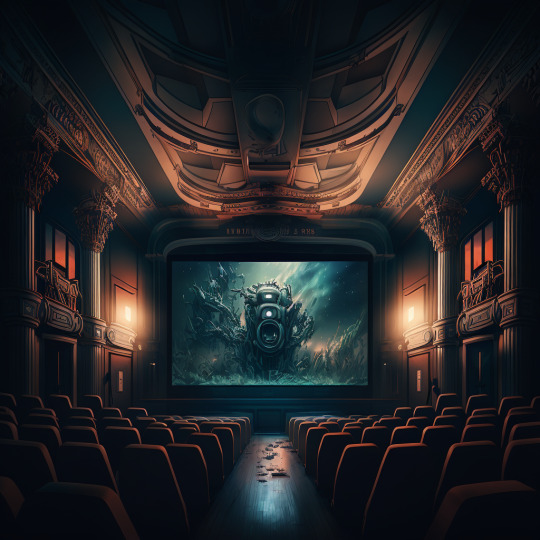
For over a century, movie theaters have been a staple of popular culture. They have provided a magical space for people to escape their daily lives and immerse themselves in the fantastical world of cinema. Movie theaters have gone through many changes over the years, but they have always retained their allure and cultural importance. In this article, we will explore the history and future of movie theaters and examine why they continue to be a magical space for moviegoers. Chasing Grace Film movie theater.
The Early Days of Movie Theaters
The origins of movie theaters can be traced back to the late 19th century when the Lumiere Brothers invented the Cinematographe, a device that allowed them to project moving images onto a screen. At first, the films were shown in traveling shows, where they would be displayed on a white sheet hung in a public space. It wasn't until 1896 that the first permanent movie theater, the Vitascope Hall, was opened in New Orleans.
The early days of movie theaters were marked by a lack of regulation, and many of the films shown were short, low-quality productions. However, as the popularity of movies grew, so did the need for better exhibition spaces. In the early 1910s, the movie palace was born. These grand theaters were designed to be a luxurious experience, with ornate decorations and comfortable seating. They became a hub of social activity, a place for people to gather and be entertained.
The Golden Age of Movie Theaters
The 1920s and 1930s were the golden age of movie theaters. The film industry was booming, and new stars were being made every day. Movie palaces continued to grow in popularity, with theaters like Grauman's Chinese Theatre in Hollywood becoming cultural landmarks.
The studio system was also established during this time, with major studios controlling every aspect of the filmmaking process. They would cast actors in specific roles, produce the films, and even control the distribution of the movies to theaters. This system created a formulaic approach to filmmaking, with certain genres and themes becoming popular among audiences.
The heyday of movie theaters as social and cultural hubs was also during this time. Theaters were often the center of a community's social life, with people flocking to the cinema to see the latest films and catch up with friends. Movie theaters were also used as venues for events such as premieres, charity benefits, and political rallies.
The Decline of Movie Theaters
The post-World War II era brought new challenges for movie theaters. The rise of television and home entertainment caused a decline in movie attendance. The studio system began to crumble, with actors and filmmakers fighting for creative control over their projects.
The 1960s and 1970s saw a rise in independent filmmaking, with filmmakers such as Martin Scorsese and Francis Ford Coppola creating films that broke away from the formulaic approach of the studio system. However, these films often had limited theatrical releases and were not widely seen by audiences.
The Revival of Movie Theaters
In the 1980s and 1990s, the movie theater industry underwent a revival. The introduction of the multiplex and the megaplex allowed for more movies to be shown at once and for more varied moviegoing experiences. Theaters began to invest in new technologies, such as digital projection and 3D, to provide a more immersive experience for moviegoers.
Despite the rise of home entertainment, movie theaters continued to remain relevant. They offered an escape from daily life, a place to be transported to other worlds and experiences. The communal experience of watching a film in a theater with other people became an event in and of itself.
The Future
The Future of Movie Theaters
The rise of streaming services has presented new challenges for movie theaters in recent years. Many people have turned to at-home viewing options instead of going to the cinema. Additionally, the COVID-19 pandemic has forced many theaters to close their doors or operate at limited capacity, further impacting their financial viability.
However, the future of movie theaters is not all bleak. While streaming services provide convenience and accessibility, they cannot replicate the magic of the cinematic experience. Going to the movies is a communal experience, with audiences sharing in the emotions and reactions of the film together. This connection to others and to the film is something that cannot be replicated in a solitary viewing experience.
There are also exciting possibilities for the future of movie theaters. Virtual and augmented reality technologies could provide a new level of immersion for moviegoers, allowing them to step into the world of the film. Theaters could also experiment with new types of programming, such as curated film festivals or immersive experiences that tie in with the themes of the film.
Furthermore, movie theaters have the potential to continue evolving and adapting to changing audience preferences. They can offer more diverse programming, cater to underrepresented communities, and prioritize accessibility for all moviegoers.
Conclusion
Movie theaters have a long and fascinating history, and they continue to hold a special place in the hearts of moviegoers. They have provided a magical space for people to escape and immerse themselves in the world of cinema. While the future of movie theaters may be uncertain, they will always have a place in popular culture as a symbol of communal experiences and the power of film. As long as people crave that shared experience, the magic of the silver screen will endure.
0 notes
Text
A Greenpeace Expedition of a Lifetime. Unlisted
A Greenpeace Expedition of a Lifetime. Unlisted
Greenpeace ships hoisted their sails for an epic journey across the oceans, from the North Pole to the South Pole. During this year-long expedition, scientists and experts joined the crew to conduct crucial scientific research. They have also witnessed firsthand threats to the oceans, such as overfishing.
The oceans produce half of our oxygen and food for a billion people. And because they…

View On WordPress
0 notes
Text

New Orleans’ Vitascope Hall opened on July 26, 1896. #OnThisDay It is widely recognized as the world's first permanent, for-profit movie theater.
Image from 1916 The Motion Picture News shows William “Pop” Rock, the New York businessman who opened the theater with business partner Walter Wainwright (far right).
17 notes
·
View notes
Text
The Difference Between Movies and Films
Films and movies are frequently used interchangeably. Films are usually commercial productions that entertain or educate their viewers. However both terms have different meanings fmovies. The former is more commonly used by people working in the film industry, or people from other countries. The latter is more frequently used by consumers. This article will explain the distinctions between these terms. Let's start with a definition. A movie is a motion picture that is projected on the screen.
The 1930s and the early 1940s are often regarded as the "Golden Age" of cinema, because film was the eleventh-largest industry in the United States by 1939. About two-thirds of Americans went to the movies every week during this time. At this time, films such as Citizen Kane or Grapes of Wrath were produced. However, the rapid growth of the industry ended shortly after World War II, due to postwar inflation and the introduction of television.
In the beginning of film, viewers were bombarded with images. They were both disbelief and thrilled but also scared. Some even left the theaters when moving objects came close to them. Technology was necessary to make films appear as authentic as they could however, it also had an impact on moviegoers.
The relationship between motion frames and their arrangement is equally important. Filmmakers tended to place scenes in a certain order, while others preferred to use the sequence of images to tell an story. Many frames are not sequentially numbered. Instead, they are arranged in accordance with the actions of the characters.
Thomas Edison and the Lumiere brothers showed the first motion pictures to an enormous audience in the beginning of cinema. The Edison Company created an improved projector called the Vitascope and held the first screening of films in New York's Herald Square in 1896. Then, the film became a staple of entertainment.
The rapid growth of television and antitrust legislation also created problems for the movie industry. Lumiere believed that audiences would eventually become bored of motion films however, they became popular in Europe and around the globe. Representatives from the company toured the country, showing the films and competing against other forms of entertainment. The movie industry eventually replaced live theaters altogether.
There is a significant distinction between fiction and reality in movies. Some movies are based upon historical facts while others are fictions. Filmmakers use narrative to create a sense of real fmovies.to. These codes are accepted implicitly by the viewer and they confirm them by watching films regularly. As an example an example, a film that opens in a torture room and closes with an attack in less than seconds is referred to as the "magical lantern." This means that the projected images possess magical qualities. This is why early films were extremely popular.
Moviegoing was a popular pastime among the middle classes of the 20th century. They were also seen as more opulent forms of entertainment than live theatre. This led to the construction of lavish theaters and extravagant furnishings. The dream palaces of Hollywood were eventually built and the production of feature film became a major industry.
0 notes